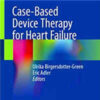Balanced Fluid Resuscitation for the Critically-Ill: the PLUS study mirrors the BaSICS
pulmccm.org
Intravenous fluid therapy is one of the most commonly-performed interventions in all of critical care medicine. Numerous trials over the last 20 years have attempted to identify the ideal fluid for those in the intensive care unit, with conflicting results.
As the authors note, there is some consensus with regards to 4% albumin in traumatic brain injury and hydroxyethyl starch in kidney injury; that is, avoid these combinations! However, only the last 5-7 years has there been more attention paid to crystalloid therapy and in particular the difference between 0.9% saline and ‘balanced’ solutions.
As touched upon previously, some of this interest has moved in-step with greater appreciation of Stewart’s Strong Ion Difference [SID] as a means to explain plasma acid-base chemistry.
Given that balanced solutions replace strong, chloride anions with weaker conjugates, balanced solutions do not shrink the SID; consequently, with a larger SID, fewer protons emerge. In other words, there is less hyperchloremic, non-gap metabolic acidosis.



















